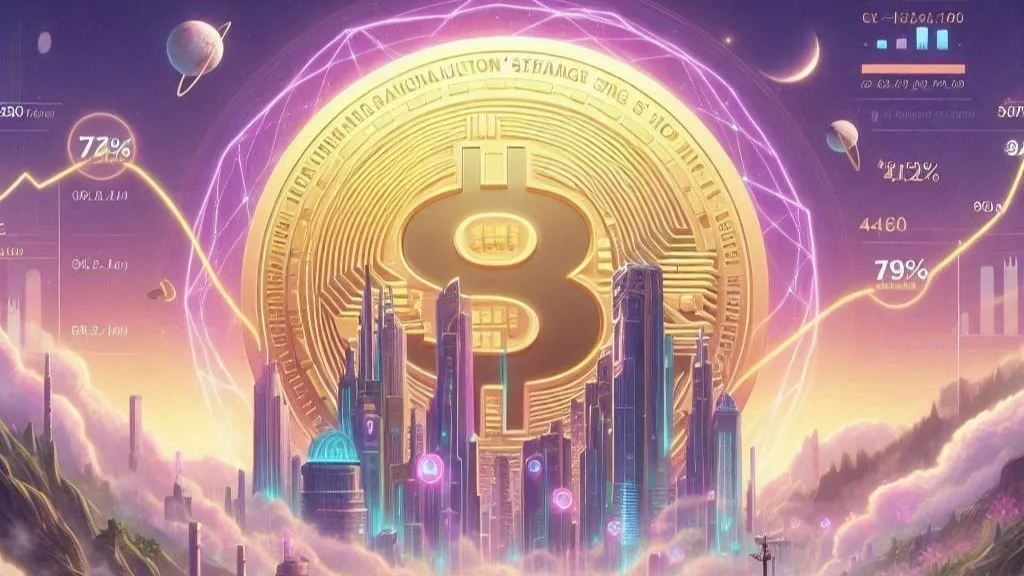
The conversation surrounding Cardano (ADA) as a potential U.S. reserve asset has been gaining traction, but experts remain divided on its viability. The idea, which initially started as part of a broader discussion on alternative cryptocurrencies, has sparked skepticism as analysts question whether ADA has the necessary characteristics to be classified alongside established assets like Bitcoin (BTC) or Ethereum (ETH).
While Cardano’s network has shown growth, its current metrics still fall short of what would be expected from a national reserve asset. With a total value locked (TVL) in decentralized finance (DeFi) at just $448.9 million as of Q4 2024, ADA’s presence in DeFi is a fraction of Ethereum’s dominance, which stands at a staggering $50 billion. Moreover, recent developments in whale inflows and a decline in active addresses have raised concerns about ADA’s ability to meet the high standards demanded by a reserve asset.
Venture fund manager David Nage has been one of the most vocal critics of Cardano’s inclusion in the conversation about national reserve assets. Nage compared Cardano’s TVL and developer activity to Ethereum’s far larger ecosystem and found that Cardano is still a relatively small player in the broader market. Despite recent growth in active addresses—from 25,000 to 70,000—Cardano still holds a mere 0.4% of the total DeFi TVL across all blockchains.
Adding to the skepticism, Gemini co-founder Cameron Winklevoss argued that Bitcoin is the only cryptocurrency that truly meets the criteria for a reserve asset, with Ethereum being a possible exception. Coinbase CEO Brian Armstrong similarly suggested that a market-cap weighted index of crypto assets could be considered, though this would still likely place Cardano at a disadvantage given its relatively smaller market capitalization compared to Bitcoin and Ethereum.
Despite these concerns, Cardano’s recent price surge has fueled speculation about its potential as a reserve asset. Between late February and early March 2025, ADA surged by a remarkable 74.23%, outperforming other cryptocurrencies in the same timeframe. This price movement has led to optimism in the market, with many speculating that Cardano could one day be considered for such a status.
However, on-chain data paints a more cautious picture. According to IntoTheBlock, Cardano’s active addresses peaked at 320,000 during the 2021/2022 bull run, but the figure has since dropped below 100,000. This significant decline raises concerns about the network’s adoption and whether the current price surge is reflective of genuine use, or merely driven by speculation.
Santiment’s sentiment analysis further suggests that much of the recent interest in Cardano is not due to core network developments but instead stems from political discussions surrounding its potential role in U.S. reserves. Keywords such as “Trump,” “strategic,” and “reserve” are frequently associated with ADA in social media discussions, indicating that external political factors are playing a larger role in driving Cardano’s market sentiment than its technical or operational advancements.
Another issue for Cardano’s inclusion in the national reserve conversation is the tepid institutional confidence it has garnered thus far. Whale activity in ADA has dropped dramatically, with large holder inflows falling by 97% in a week. This suggests that institutional investors are not yet convinced by the asset’s long-term prospects, even as smaller investors (mid-sized holders) have slightly increased their positions.
This lack of significant institutional interest mirrors a broader trend of capital redistribution rather than new, large-scale investment in Cardano, which could be seen as a sign that ADA is still struggling to attract substantial capital inflows needed for long-term stability.
The idea of including Cardano in a national crypto reserve raises several key questions, particularly around its current size and use case. As analysts from Bernstein pointed out, convincing Congress to accept Bitcoin as a digital gold-like reserve asset might be challenging but achievable. In contrast, persuading lawmakers to allocate public funds or treasury assets to Cardano—an asset with much smaller market capitalization and uncertain long-term viability—would be a far more difficult sell.
Cardano’s footprint in the stablecoin market is also minimal, making it an even less likely candidate for a reserve asset. ADA currently represents just $22.3 million of the $223 billion stablecoin market, a minuscule fraction of the global stablecoin infrastructure.
For Cardano to be considered a viable option for inclusion in a U.S. crypto reserve, several critical metrics would need to improve substantially. Active addresses must return to previous highs of 320,000 or higher, and Total Value Locked in DeFi must grow beyond its current 0.4% market share to show that Cardano can truly facilitate meaningful capital deployment. Additionally, the network’s involvement in stablecoin infrastructure would need to expand significantly to match its competitors.
As David Nage concludes, the path to Cardano’s acceptance as a reserve asset is a long one. It will require substantial ecosystem development, including the creation of products that millions of people rely on, alongside effective storytelling to solidify the narrative that Cardano is ready for such a prestigious role.
While Cardano’s political prominence may be growing, the project’s current metrics suggest that it remains in the early stages of aligning its market fundamentals with the expectations surrounding its elevated status. The coming years will be crucial in determining whether Cardano can bridge the gap between political designation and market reality.


Get the latest Crypto & Blockchain News in your inbox.